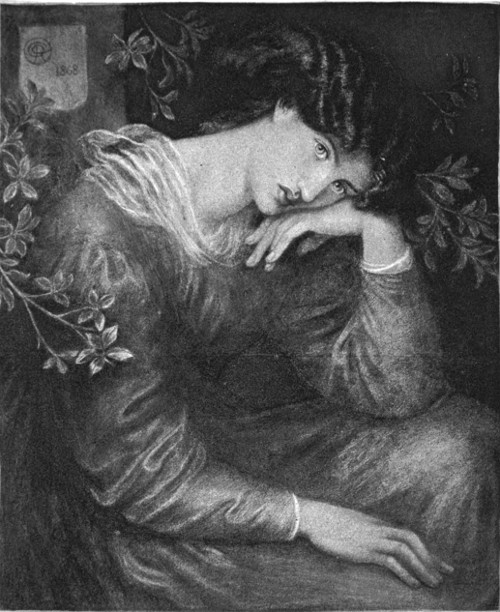Errors, when reasonably attributable to the printer, have been corrected.The corrections appear underlined as corrected text.The original text appears when the mouse hovers on theunderlined word or phrase. Please see the transcriber’s noteat the end of this text for details.
Footnotes have been resequenced to be unique across the book, andhave been gathered at the end of the text. They are linked to theirreferents in the text.
The illustrations have been moved to avoid falling within a paragraph.Each plate accompanied by a caption and attribution either on a previousor following page, and both caption and illustration were blank on theirverso, and all four were not included in the pagination. The blankpages are not included here, obviously.
The cover has been fabricated and is placed in the public domain.
DANTE ROSSETTI AND
THE PRE-RAPHAELITE
MOVEMENT

PREFACE.
The following pages do not afford anymaterial additions to what is already knownof Dante Rossetti, or of the history andpurpose of the Pre-Raphaelite Brotherhood. Theauthoritative biography of Rossetti has yet to bewritten; and while availing myself fully of suchnew details as may cast fresh side-lights upon thedominant personalities of the Pre-Raphaelite movement,my aim has rather been to present the mainfeatures of that movement in their relation to thelarger intellectual tendencies of the age, and to themoral principles which have determined the growthof taste and feeling in the nineteenth century. Tothis end I have avoided as far as possible theproper domain of the art critic, and endeavouredto deal with the Pre-Raphaelite movement more asan ethical than an æsthetic revolution.
“It was always known to be Rossetti’s wish,”says Mr. Hall Caine in his interesting andgraphic “Recollections of Rossetti,” “that if at anymoment after his death